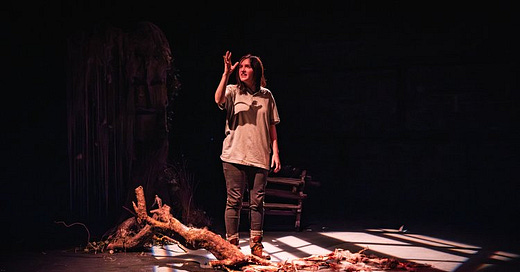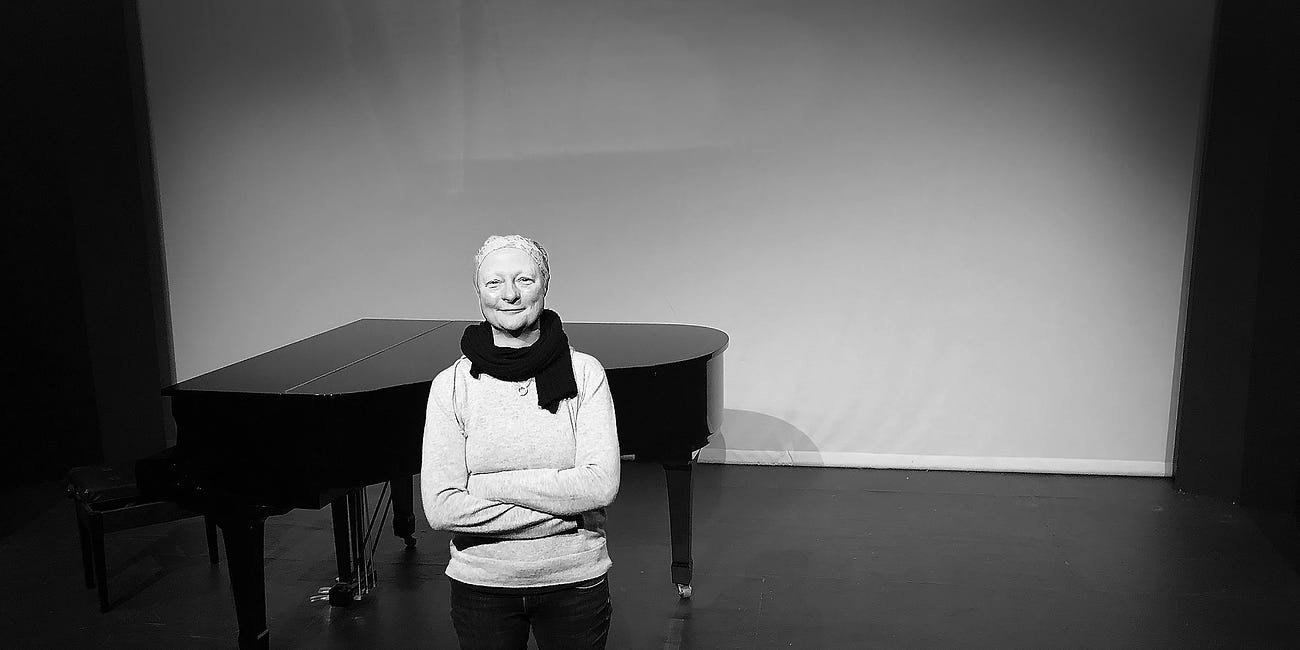Theatre review: The Hare
A young girl’s day is shifted entirely off course when she receives a mysterious letter summoning her to a bridge writes Pádraig O’Connor in his review of 'The Hare' now showing at the CAT Club.
God was the original absent father. He was so absent in fact; he sent his only son among us to spread word that he really did exist. In doing so, the psychology of the mature masculine man, missing from the home was born.
In 'The Hare', written by Clare Monnelly and Bob Kelly, an absent father also looms large, as when the play opens, we are introduced to a troubled young girl who never knew her father and whose mother is confined to a bed for some unknown reason.
The unnamed girl, played by the very talented Úna Ní Bhriain, lives primarily in her own private realm of dreams and fantasy. Although her mother warns her about the dangers of the world, she also refers to her daughter as a fool or “amadán”.
So, the play is based somewhere in rural Ireland for sure, in a rather mystical fairy-like setting, a beautifully created set designed by Jenny Whyte, which aids greatly in imbuing the story with a sense of the cross country journey the girl is about to embark on.
The action unfolds and as it does, we learn that the girl is a social pariah and doesn’t really fit into the world around her, nor does she have any friends and seems happiest when outside roaming the countryside on her own. Her relative peace however, is interrupted by the interactions with her fellow classmates at school, who are anything but kind to her, making fun of her country chic appearance, among other things.
In the description for the play, it says it wishes to explore "social isolation and the modern disconnect from both the natural world and our unconscious nature", well the girl is out in the fields, listening to the sea and eating apples, so there’s no problem with the natural world, but any child in rural Ireland using words like “betwixt” is bound to feel some social isolation, because when we hear her classmates speak, they all sound like children brought up using the internet on a daily basis.
You wonder then, how did she alone come to speak in lightning-fast staccato sentences, in a generic country voice that sounds like a cross between the love child of a confused Shakespearian and a Tipperary hurler?
Regardless, her day is shifted entirely off course when she finds a letter instructing her to meet at a bridge later that day. Before we get there however, she must go to school, which she hates, and face the ignominy of standing in front of the class without having anything prepared. Suddenly something happens to her, which happens to young girls, for the first time, possibly, it's hard to say, as it’s unclear how old we're supposed to believe she is.
Throughout the play the girl is accompanied by the literal, on stage figure of Steve Wickham from The Waterboys, playing a variety of different instruments which create a mysterious atmosphere very suited to the setting, and the metaphorical figure of a hare, who mainly watches the girl through windows. In pagan times the hare symbolized fertility or good fortune. In other times, seeing a hare was viewed as a bad omen. But here, the hare is what? Voyeuristic? Omnipotent? Or something else entirely?
Eventually the girl gets to the bridge and waits for the person who wrote the letter to arrive. At this stage she is full of hope and recites some poetry, claiming to admire Emily Dickinson and Sylvia Plath. Quite sophisticated taste for a young girl. But maybe she's not that young. But if that is the case, she's not the brightest of angsty teenagers if she’s finding letters in a field and following their instructions without a sliver of doubt creeping into her mind.
At the bridge, there's an unexpected twist for the girl. Will the person who wrote the letter show up? Will the hare reappear? The audience hung around for fifty minutes to find out and were so happy with the answer, they gave a standing ovation when the play ended.
There is a fantastic creative team involved in this project and everything about the production is very sleek and polished. The music and sound design is terrific. Úna Ní Bhriain carries a difficult manner of speech with great aplomb and her overall performance is very good. The script however, seems very much born out of a necessity to make work, as opposed to an irresistible urge to make art. And this crucial difference matters a great deal. If you want to understand why, then you should go see The Hare.
The Hare’s final show at The Cork Arts Theatre on Carroll’s Quay is at 8pm, today, Saturday July 15. Tickets and more information here.
Pádraig O’Connor is a playwright originally from Kerry, living in Cork city. This is his first review in Tripe + Drisheen and was made possible by support from subscribers. Thank you.
CAT woman
Listen now | Remember to press play above to listen to Tripe + Drisheen’s podcast interview with Fin Flynn.







This review was sent to me by someone I had recommended the play to. I normally don't engage with social media. I found this "review" to be factually inaccurate and written in a bitter and condescending tone. He claims that it was not "Art". Well what I witnessed was an amazing evocative set, beautiful music, an incredible performance, and all perfectly complementing an excellent and interesting script. I felt emotionally altered in several different ways and I came away wishing I could see it again. It was Art in the highest sense to me. I shall be looking out for these gifted playwrights in the future.
I saw the play on Thursday evening. I certainly was not hanging around for the end. I was engaged and enthralled. I joined in the standing ovation at the conclusion of the performance as a reflection of my appreciation. The chat in the lobby as the audience exited indicated the majority in attendance were both entertained and moved by what they had witnessed.
The reviewer found the play to be work rather than art. All plays, of course, are the work of the playwrite. That does not preclude them from being art. The Hare, in my opinion, is a work of art; and a fine one at that.